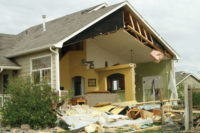The Shifting Landscape Between Insurer and Contractor

Bob Dylan told us “The Times They Are A-Changing” nearly 40 years ago. That expression is probably one that Socrates could have used, and it certainly applies to the field of insurance restoration today.
Nothing is more certain than change. And there can be no doubt that the relationship between insurance companies and contractors has shifted from one of mutual cooperation to a more distant acknowledgement by the insurer that if a property owner wants damaged property restored, he or she is going to have to find a contractor to do the work.
This shift was brought home to me recently as I was at the scene of a friend’s property in Florida that had been damaged by fire. I talked to Mike Birkler, a longtime adjuster who had been brought in by the property owner to give a second opinion on the damage. “I was trained to adjust a loss like it was my parent’s house,” Birkler said. “If someone had a kitchen fire and had damage to custom cabinets, I’d talk to a contractor to find out what it would cost to replace not just any cabinets, but custom cabinets.”
Birkler has seen a major shift in the way insurance companies handle claims – a change brought on by computerized estimating programs and the drive for efficiency. The process is more mechanized now, he says. For example, the insurance company sends out an independent adjuster who looks at the loss, runs Xactimate or some other estimating program, and comes up with a figure for the damage. He turns in his estimate to the staff adjuster who will never visit the site, but will approve a check for the policyholder. The policyholder receives the money and then looks for a contractor to do the restoration.
Birkler usually gets called to a job after the contractor has given the property owner an estimate for restoration that far exceeds the amount of the insurance check. On a job where an insured received a check for $4,000, Birkler put the loss at $74,000, and a second insurance adjuster figured the loss at $54,000. The claim will likely be settled at some point between $54,000 and $74,000.
Computers Don't Adjust - They Estimate
“It takes a person to be an adjuster,” Birkler said. “The role of an adjuster is to look at the damage and the estimate, and then determine whether the estimate reflects the true cost of a restoration.”This transition in the way claims are processed by the insurance companies is a deliberate attempt to disconnect the insurer from the contractor. What used to be a collegial, cooperative relationship has shifted to one that is, regrettably, more competitive and challenging.
What does this mean for the insurance restoration contractor? For starters, we must keep meticulous records in order to justify the true costs of a restoration. We must stay current with the best practices for insurance restoration work. Finally, marketing to property owners must be a fixture in our marketing plans.
The restoration contractor is a professional who should be a partner with insurance companies and insureds. It’s indeed unfortunate when our role puts us in the position of begging for or demanding the money required to do a restoration the right way.
Looking for a reprint of this article?
From high-res PDFs to custom plaques, order your copy today!




